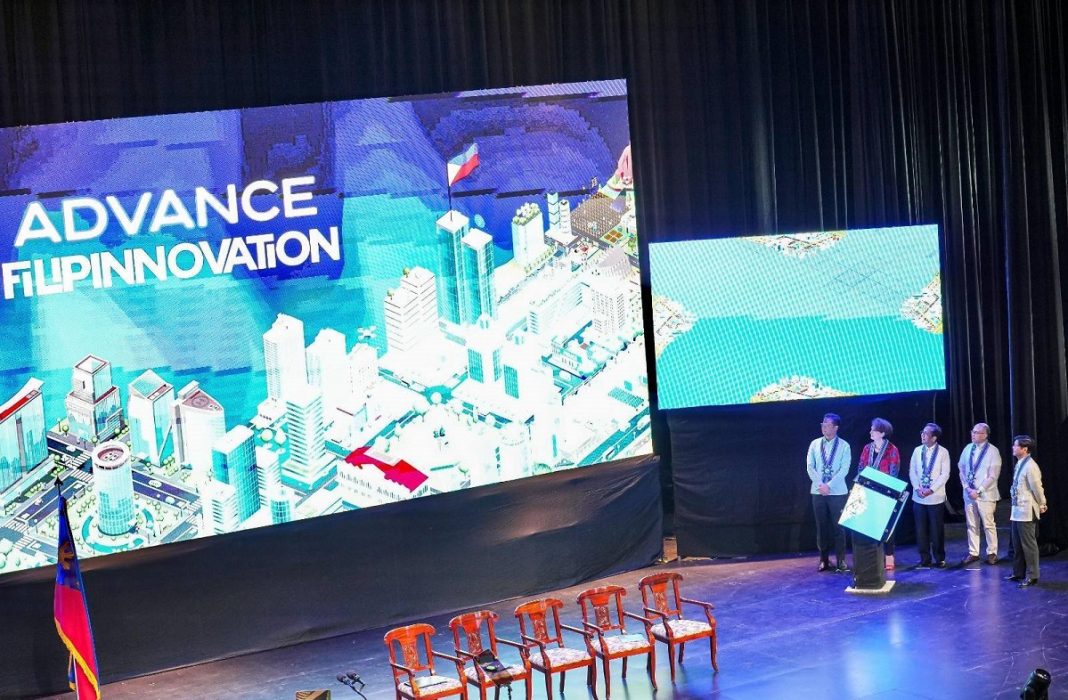The government on Wednesday, Sept. 27, launched the country’s innovation roadmap, which aims to make innovation the centerpiece of sustainable development.
National Innovation Council (NIC) chairperson, Pres. Ferdinand R. Marcos Jr., led the launch of the National Innovation Agenda and Strategy Document (NIASD), along with NIC vice chairperson, National Economic and Development Authority (NEDA) secretary Arsenio Balisacan, and all members of the council from the government and private sectors at the Metropolitan Theater in Manila.
In his speech, Marcos said the NIASD is a blueprint that would accelerate the country’s innovation governance and promote a culture of innovation among scientists, researchers, entrepreneurs, engineers, and citizens.
“This document is not just a plan but a commitment to making innovation an indispensable component of our nation’s development agenda, and a key driver in our vision to achieve a truly smart and innovative Philippines,” he said.
The NIASD outlines the 10-year vision, long-term goals, and strategies for improving the country’s innovation priorities and governance.
The document is aligned with the Philippine Development Plan 2023-2028, which identifies the creation of a dynamic innovation ecosystem as one of its six cross-cutting strategies to sustain rapid and inclusive growth.
It also underscores the government’s commitment to providing an enabling environment that supports entrepreneurs and innovation actors through five innovation enablers, which include the NIC as the innovation governing body, policies, infrastructure, finance, and programs.
“We shall reform our education curriculum design and learning platforms to develop the creativity, curiosity, problem-solving skills, and entrepreneurial abilities of Filipinos for the 21st century,” Marcos said.
“Likewise, we shall bolster spending for research and development; support local enterprises; ensure food security through smart agricultural inputs to empower local producers; facilitate efficient and secure financial services; accelerate digitalization efforts to boost manufacturing processes and commercialization of products and services; improve mobility through better urban-rural linkages; and reduce carbon footprints of our transport systems.”
The president expressed hope that with the NIASD, the Philippines would be able to position itself as a stalwart of innovation along with its neighboring countries in Southeast Asia.
“We are hopeful in the journey that we have taken, as it positions us to become a stalwart of innovation in this dynamic and promising region,” he said.
“This initiative promises the long-awaited transformation for our nation. It also represents the collective efforts of a society that is coming together in synergy.”
Meanwhile, Balisacan said the NIASD was co-created with partners from the academe, industry, and government to ensure that it responds to the needs of all innovation actors.
“Our overall goal is to empower our innovation actors, particularly startups and MSMEs (micro, small and medium enterprises) so that they may become more productive, more resilient, and more competitive in navigating the ever-changing and uncertain demands of the global market and amid the challenges they face in our current local ecosystem,” he said.
“The very theme of our event today signifies our envisioned future where our citizens can organically transform their knowledge and novel ideas into market-driven, market-oriented, and market-valued innovative products or services.” — Anna Leah Gonzales (PNA)




